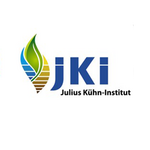Remote sensing for greenhouse gas reporting
The observation and analysis of land use and land use changes is increasingly based on aerial photography and satellite data. It is important to use these data sources as effectively as possible in order to gain insights into the spatial distribution of greenhouse gas emissions and to identify carbon sinks.
Data from remote sensing, as geo-referenced information on land use, represent an additional data source to the official or sovereign land use data and are suitable to close gaps (spatially, temporally, thematically) and thus to put the monitoring for GHG reporting but also the projections on a solid data basis.
Scroll to top




